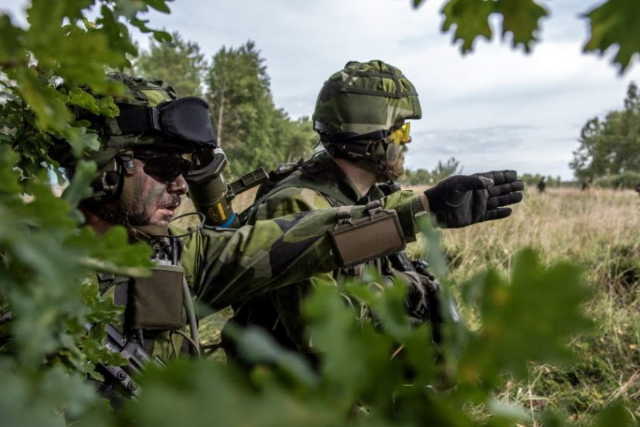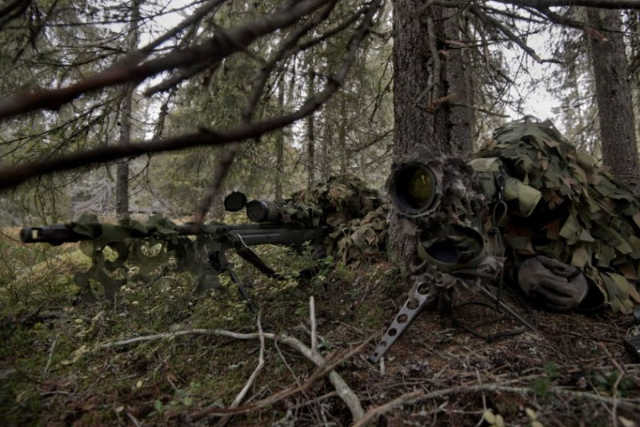According to foreign sources, in May of this year at the Kvarn training ground, during demonstration firing of portable anti-tank systems manufactured by Saab, the Commander-in-chief of the Swedish Armed Forces, Major General Karl Engelbrektson, announced the government's decision to form a total of four army brigades, a combat group on Gotland Island, as well as the command divisions. The general's speech took place in the presence of 300 participants of the event.
"We are not threatening anyone," the general stressed. The essence of the planned reforms was to be able to defend the entire territory of Sweden from a "sophisticated enemy". As noted by K.Engelbrektson, a few decades ago, when he joined the army, there were 36 brigades in the Swedish Armed Forces, and the wartime number was 850 thousand soldiers. After the Russian invasion of Ukraine, non-NATO Finland and Sweden are discussing joining the North Atlantic Alliance. According to the commander-in-chief, currently the majority of the population of both countries is in favor of joining, although just a few months ago such a step was considered extremely unlikely. Observers suggest that a political decision may be made in the near future. At the same time, if they join, "Russia threatens both countries with consequences."
In the representation of K.Engelbrektson, the government's demands actually mean doubling the number of Swedish Ground Forces over the next 10 years. "For the first time in my career, I don't see any problems with money," the general said. The government even exceeded the wishes of the military, who initially considered the possibility of creating only three brigades, two combat groups and a divisional command.
"Protective bubbles" of the Swedish Armed Forces
Among other things, the restructuring of the Swedish ground forces is also related to the creation of a command suitable for the integration of Allied forces. Moreover, it is planned to form the potential of brigades to ensure the creation of prohibited access zones (Anti-Access Aerial Denial, A2/AD). As the general explained, the new brigades should receive their artillery, air defense and engineering sapper units. Air defense capabilities will vary in the range of 70 km, and rocket artillery – up to 150 and 300 km. In this context, we are talking about mobile "protective shields or protective bubbles" that brigades must create to protect against the enemy. In each such "bubble", the sensors should optimally integrate with the means of destruction (effectors). They have one goal in front of them – the defeat of an armored enemy "beyond the line of sight."
According to Engelbrektson, it is important to purchase new weapons systems together with the appropriate simulators, as well as to ensure that the simulators can reproduce real ballistic effects. This is due to the fact that in the process of military procurement, combat training and exercises are sometimes underestimated, he stressed.

The Swedish Armed Forces. Working out decision-making at the landfill
The importance of camouflage and UAVs
According to sources, in his speech, the general attached great importance to the topic of disguise – both in terms of equipment and in terms of training. The battle is won by those who disguise themselves better, because they can act faster in the so–called OODA loop (observation, orientation, decision, action), that is, in the military decision-making cycle (formulated in 1995 by John Boyd), in which information is processed and translated into specific military actions - "while the enemy still hesitating."
In this regard, and apparently with reference to Saab, the manufacturer of Barracuda multispectral camouflage solutions, K. Engelbrektson demanded not to openly demonstrate the latest camouflage technologies in order not to allow the opponent to draw conclusions about the capabilities of the Swedish Armed Forces. The General also sees the need to catch up on the use of drones. Sweden needs to make faster progress in this area.
From the war in Ukraine K.Engelbrektson concluded that, in the end, the capabilities of industry are important for victory. In Sweden, he said, there is close cooperation between the army and the FMV procurement agency, which is accurately informed about the needs. Now they have seen many of their own systems "tested in battle," the commander–in-chief stated with regret.
According to the materials of the European Security & Defense magazine

